Interventions for Cortical Injury & Cognitive Decline
Interventions for Cortical Injury & Cognitive Decline
Lab Director: Tara Moore Ph.D.
Our laboratory for Interventions for Cortical Injury and Cognitive Decline focuses its research
efforts on studying cognitive abilities and motor impairments across the lifespan and following
cortical injury in the rhesus monkey. Specifically, we examine age-related changes in cognitive
and motor functions and assess the response of the aging brain to injury. In addition, we study
the efficacy of various therapeutic interventions to slow or reverse age-related changes in
cognition and stimulate recovery of function following cortical injury.
We are currently assessing the efficacy of a novel therapeutic interventions, mesenchymal
stromal cell derived extracellular vesicles to enhance recovery of fine motor function of the
hand, reduce inflammation and stimulate plasticity and cortical reorganization following
cortical injury and for reversing age-associated inflammation, myelin degeneration and
cognitive decline. This work is completed with our collaborators at the Henry Ford Health
System in Detroit, MI. Our research is support by grants from the National Institute of Aging
and the National Institute of Neurological Disease and Stroke.

Laboratory News and Events:
– Our undergraduate student, Rutu Tatke, presented the research she completed in our laboratory as part of her UROP award. Rutu has been working on our study investigating the effects of mesenchymal stromal cell derived extra-cellular vesicles to reverse the inflammatory response after cortical injury. Congratulations Rutu!
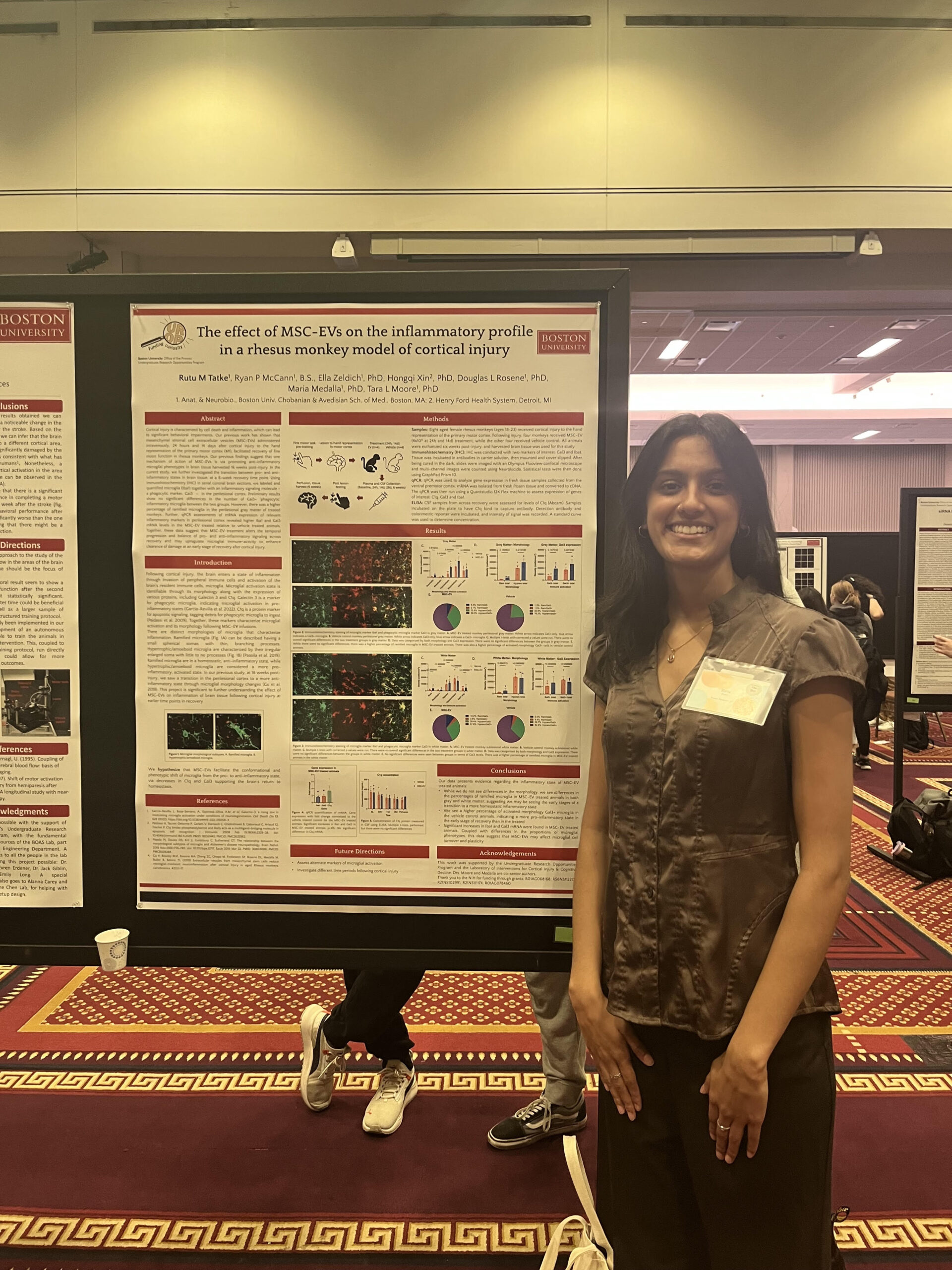
Faculty

Tara L. Moore, Ph.D.
Dr. Moore’s research focus is the assessment of cognitive and motor function
impairments in our rhesus monkey models of cortical injury and aging and the
underlying neurobiological basis for these impairments. In both models, we are also
assessing the efficacy of an exciting new therapeutic, mesenchymal stromal cell derived
extracellular vesicles (MSC-EVs), to reverse deficits in cognitive and motor function by
decreasing neuroinflammation and myelin pathology.
Our model of cortical injury involves training monkeys on our tasks of fine motor function
of the hand, neurosurgical lesion production in primary motor cortex, assessment of
recovery of fine motor function and post-perfusion analysis of blood, CSF and brain and
spinal cord tissue. This model is used to establish the rate and degree of recovery of
function following cortical injury in the aged brain and to investigate the neurobiological
basis for recovery. Further, we are assessing the efficacy of MSC-EVs as a restorative
treatment to facilitate recovery of function following cortical injury. This work is being
conducted in collaboration with researchers at the Henry Ford Health System and the
University of Buffalo. To date, we have demonstrated that administration of MSC-EVs,
facilitates a complete recovery of fine motor function in the first 3-4 weeks after injury.
Further, MSC-EVs reduce injury-induced microglial neuroinflammation, neuronal
excitotoxicity, synapse loss, oligodendrocyte damage and myelination deficits. Finally, a
recent collaborative proteomic study using a GO analysis of Biological Processes
showed that proteins from MSC-EVs are highly specific and involved in signaling
pathways for cell-cell adhesion, cell proliferation, extracellular matrix organization,
MAPK cascade, Wnt signaling, and small GTPase mediated signal transduction, some
of which, play important neuritogenic and synaptogenic roles that could be involved in
ameliorating injury-related neurodegeneration and hyperexcitability.
In our aging study, we are administering MSC-EVs to aged monkeys following extensive
cognitive assessment. After a period of 18 months of treatment, we re-assess the
cognitive performance of the monkeys to determine whether the MSC-EVs have slowed or reversed age-related cognitive decline. We also acquire longitudinal MRIs and blood and CSF samples from these monkeys to quantify various biomarkers of inflammation and oxidative damage. Following completion of treatment and cognitive testing, brains
will be harvested and analyze for treatment related changes in neuroinflammation and
myelin pathology.
Finally, we are in the early stages of developing a rhesus monkey model of
hypertension (HT), using the well-established “one kidney-one clip” model of
hypertension used in rodents. With this model, we will establish the effect of HT of
cognitive function in middle-aged rhesus monkey and how HT alters the inflammation
and myelin integrity in the aged brain.
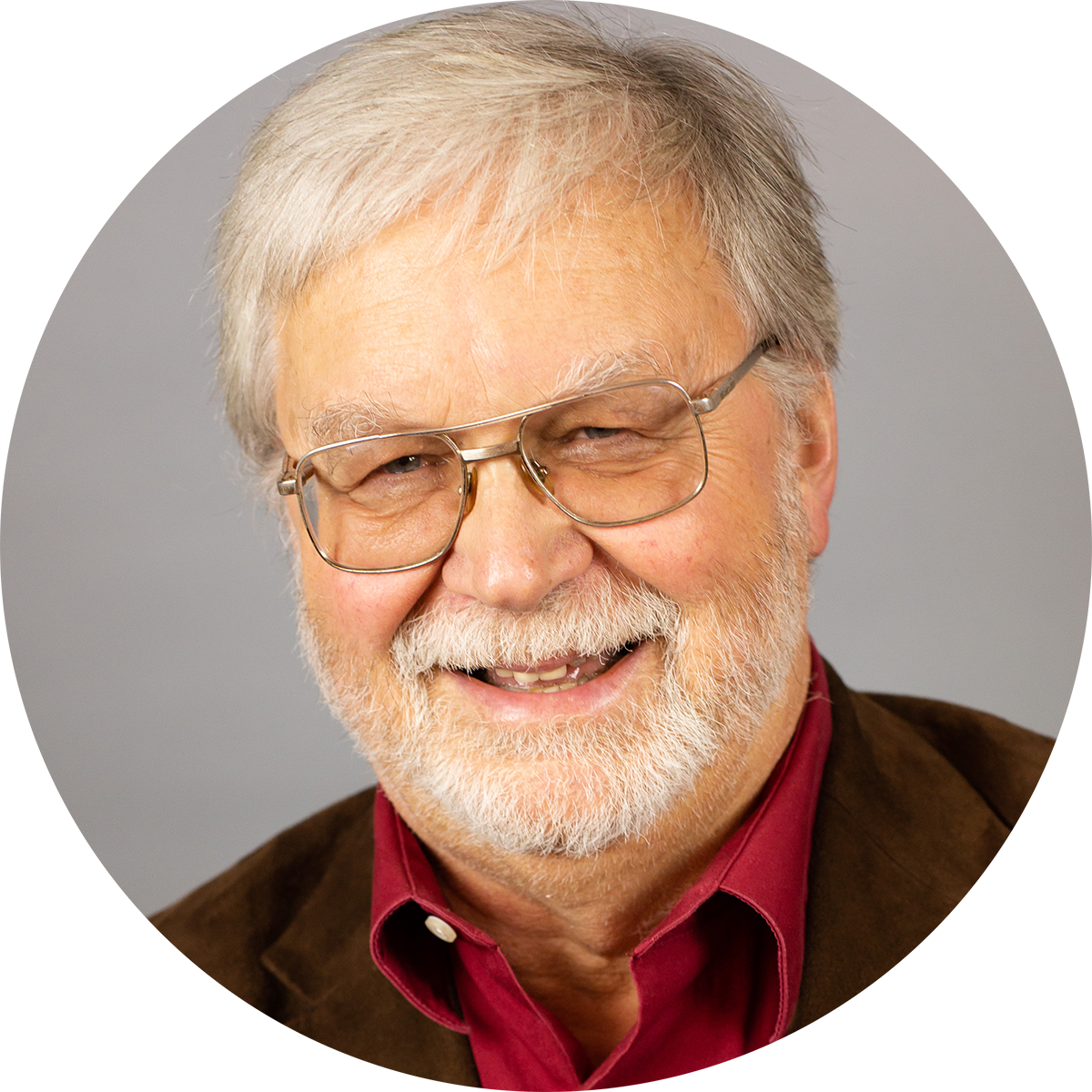
Douglas L. Rosene, Ph.D.
Dr. Rosene’s research interests focus on (1) the effect of age on brain integrity, including white matter, neurotransmitter systems and neural transmission in a primate model of normal human aging (2) the interaction of the prefrontal cortices with the medial temporal lobe limbic system 3) the effect of prenatal malnutrition on brain integrity in a rodent model 4) modeling methods to characterize age-related changes in microcolumns in the cerebral cortex and 5) the recovery of fine motor function and re- organization of the motor cortex following cortical injury in the rhesus monkey.

Maya Medalla, Ph.D.
Dr. Medalla research focuses on deciphering the pathway-specific structural and physiological properties of distinct cortical circuits in both primate and rodent animal models. She combines cellular in vitro electrophysiological methods with multi-scale anatomic techniques to understand the biophysical and synaptic properties of neurons within functionally-related cortical networks. Her expertise includes patch-clamp recording, pathway tract-tracing, multiple immunohistochemical labeling techniques for light and electron microscopy (EM), 3D serial EM, and confocal microscopy. The major goal of her work is to understand how distinct limbic, sensory and motor networks interact and are controlled by the PFC – the central executive of the brain. Her current focus is on the medial prefrontal anterior cingulate cortex (ACC) in rhesus monkeys, an area important for attention, emotions and context-to-action transformations, and is selectively disrupted in many affective disorders such as depression and anxiety disorders. In her ongoing collaboration with Dr. Moore, she specifically investigates changes in markers of synaptic plasticity, and the anatomical and electrophysiological properties of motor cortical neurons and circuits after cortical injury.

Monica Pessina, Ph.D.
Dr. Pessina received her B.S. in Occupational Therapy from Boston University, followed by a Master’s in Education from Northeastern University and a Ph.D. in Anatomy and Neurobiology from Chobanian & Avedisian School of Medicine. Prior to assuming a full-time academic appointment at CAMED, she gained extensive experience at Massachusetts General Hospital in the field of upper extremity rehabilitation following orthopedic, neurological and burn injuries. In addition, she is the former Director of Rehabilitation at Shriners Burns Institute and she continues to work as an educator in the field of burn rehabilitation both nationally and internationally. Dr. Pessina currently teaches Gross Anatomy and Microscopic Anatomy at BU School of Medicine and BU Goldman School of Dental Medicine where she serves in various roles including Course Director, Section Leader, Lecturer and Laboratory Instructor. As an extension of her clinical interests, Dr. Pessina is involved in assessing the nature of recovery of fine motor function of the hand in our NHP model of cortical injury. She has adapted human occupational therapy scales for recovery of grasp for use with NHPs.
Current Doctoral Students

Ryan McCann
Ryan is a PhD student in the Graduate Program for Neuroscience. He graduated from Emory University with a degree in Neuroscience and Behavioral Biology in 2020 where his research involved tau rodents. Ryan joined Dr. Moore’s lab in 2021 and began working on the cortical injury project using the MSC-EV treatment. His work focuses on the effect of MSC-EVs on neuroinflammation and damage in the injured brain.
Kayla M. Nist, MS
Kayla earned her Bachelor of Arts in Psychology from The Ohio State University in 2018 and in 2020, she earned her Master of Science in Anatomy & Neurobiology at Chobanian & Avedisian School of Medicine. Her MS thesis work focused the role of the blood brain barrier in age-dependent hypertension. Currently, Kayla is completing her PhD under the mentorship of Dr. Moore and Dr. Richard Wainford in projects addressing aging and hypertension. In Dr. Moore’s laboratory, her project focuses on identifying the blood pressure phenotype in the aging rhesus monkey and the role of hypertension in the development and progression of cognitive decline using a 2-kidney 1-clip rhesus monkey model of renovascular hypertension.
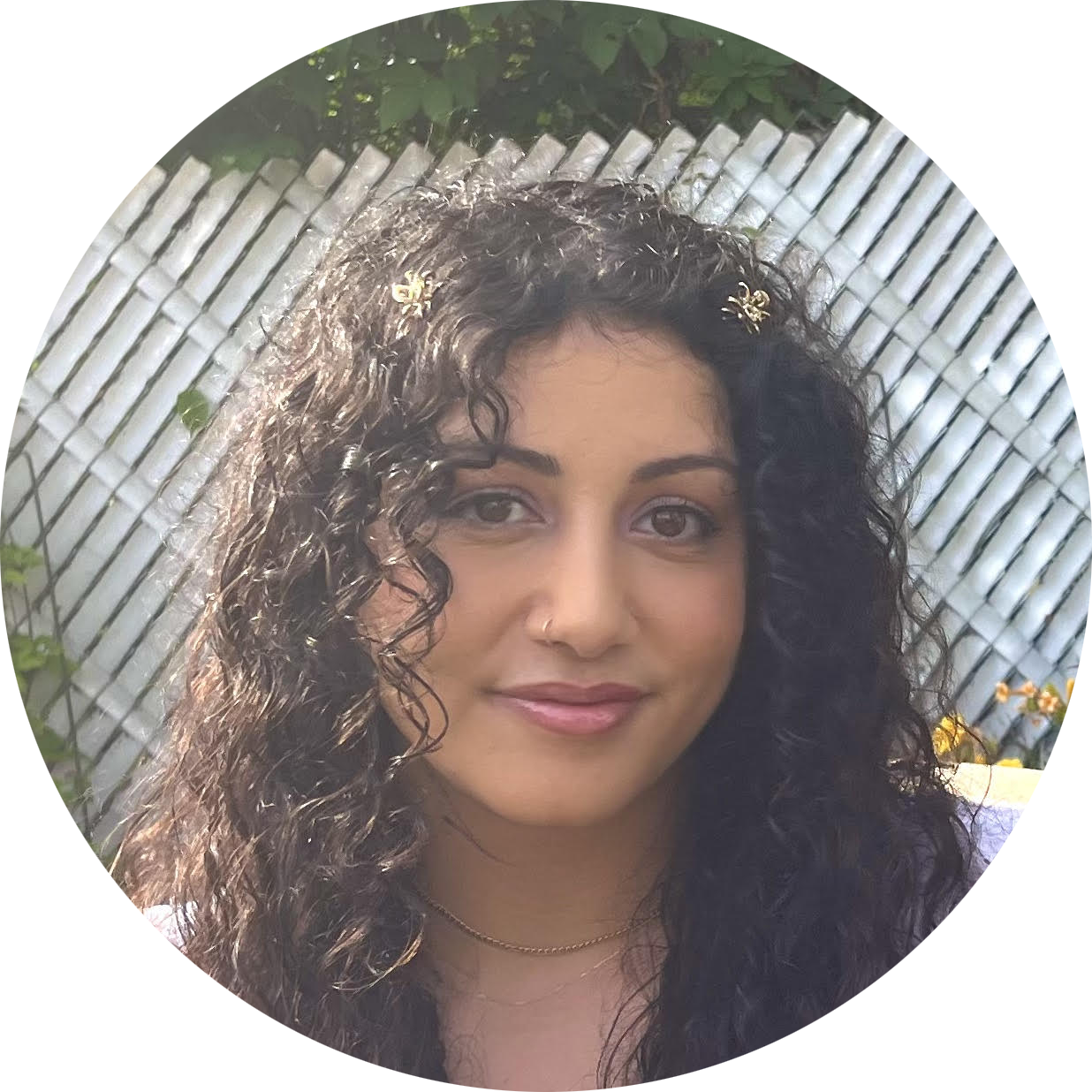
Angela Capriglione
Angela is a 3rd year Ph.D. student in the Department of Anatomy & Neurobiology. She received her B.S. in Neurobiology from Simmons University. She is currently researching the effects of extracellular vesicles derived from mesenchymal stem cells on neuronal properties in the prefrontal cortex of aged rhesus monkeys.

Evan Mackie
Evan received his BA in Neuroscience from Boston University in 2022 and is currently a PhD student in the department of Anatomy and Neurobiology. He initially joined the Moore Laboratory in 2019 as an undergraduate, contributing to projects investigating the recovery of fine motor function after cortical injury. His current graduate research focuses on evaluating the efficacy of Extracellular Vesicles derived from Mesenchymal Stromal Cells (MSC-EVs) as a therapeutic for age-related cognitive decline and neuropathology in rhesus monkeys. Beyond working behaviorally and clinically with NHPs, Evan’s research interests include studying the inflammatory response, white matter pathology, and glial cell populations during normal aging.
Research Associates/Coordinators/Managers

Bryce Connor
Bryce graduated from the University of Massachusetts, Amherst in 2021. He is now a research technician in our laboratory and has an interest in aging research. Bryce has previously worked with non-human primates as an undergraduate at UMass Amherst. His interests include Alzheimer’s research and promoting diversity and representation within STEM fields.
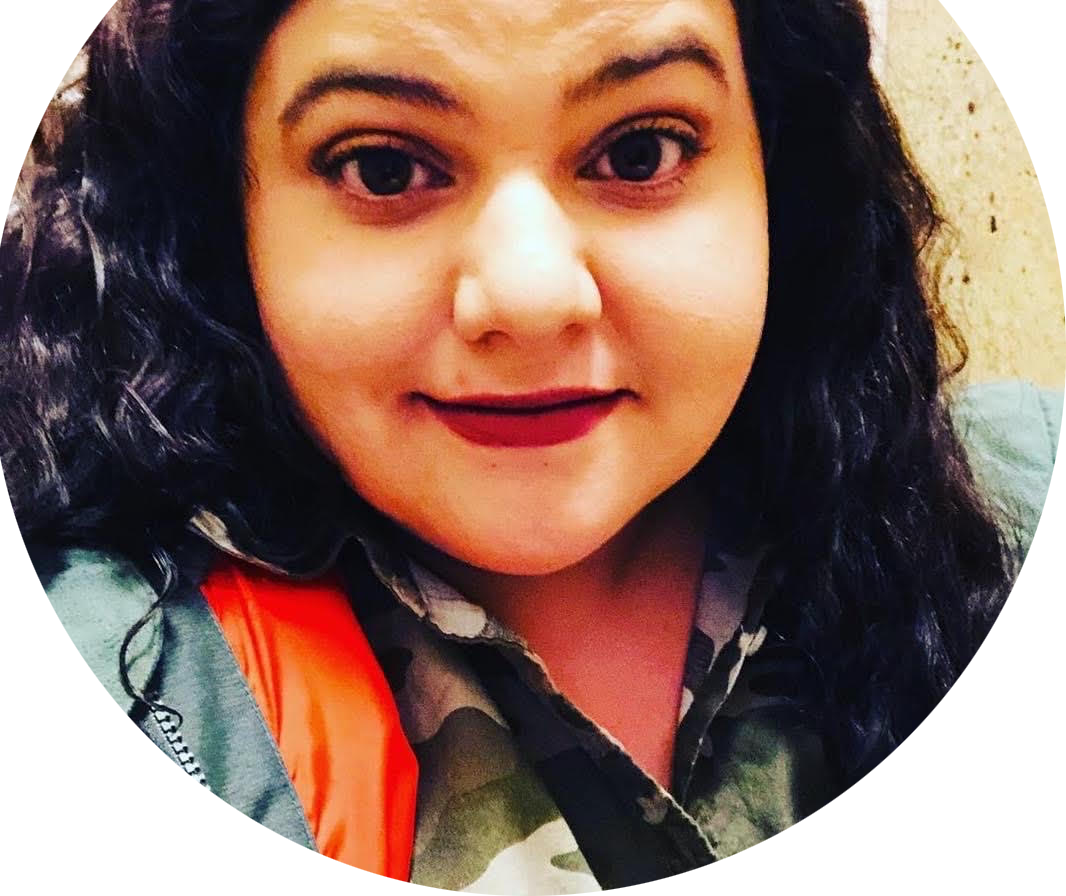
Christine Rutledge
Christine graduated from Johnson & Wales University in Providence, RI. After working at a zoological facility for 8 years with a variety of domestic and exotic animals, she joined our laboratory in 2022 with an interest in behavioral testing. She currently tests rhesus monkeys on cognitive and motor tasks, and coordinates and performs clinical procedures for study subjects.
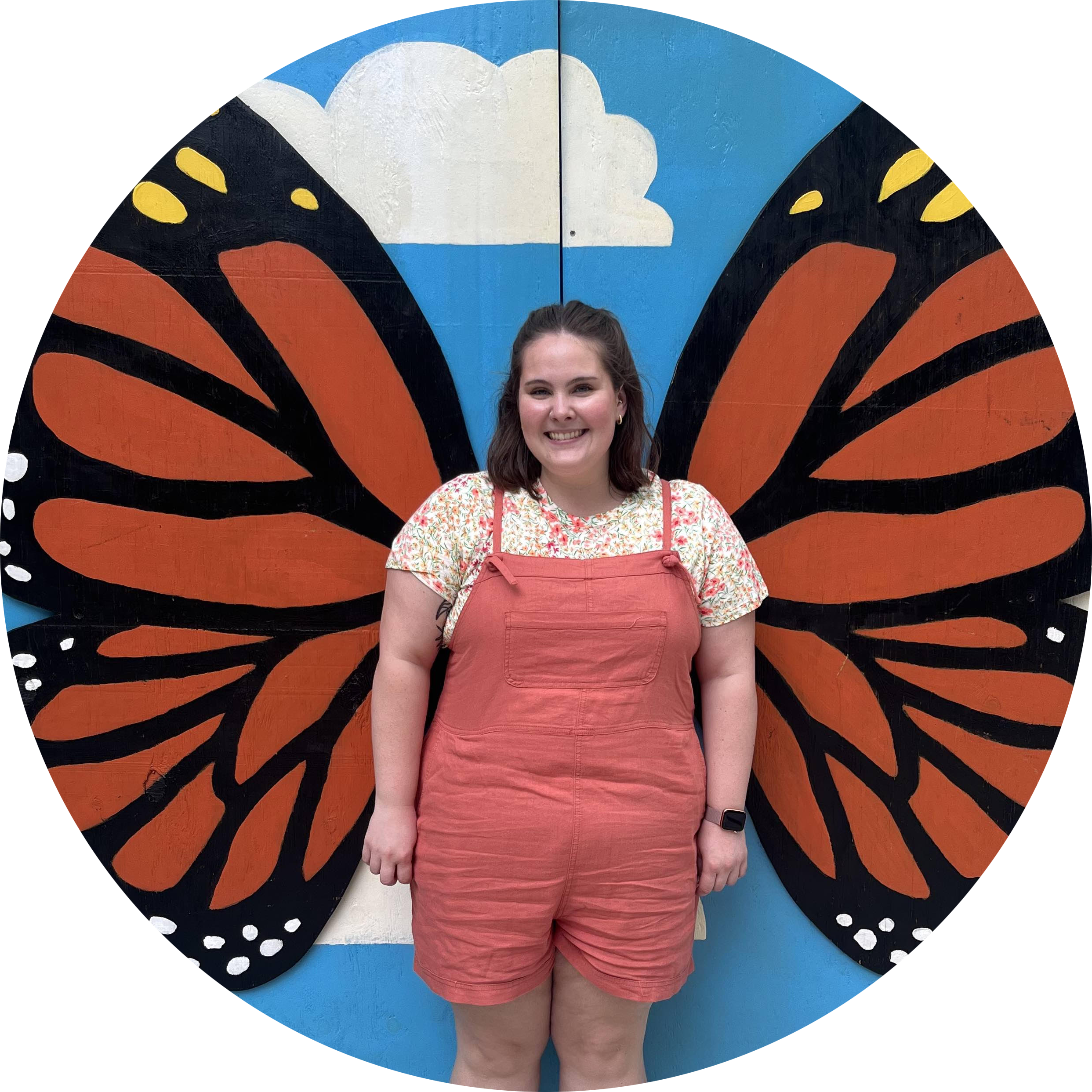
Maya Alibrio
Maya graduated from The University of Rhode Island with a BA in anthropology and her MS in forensic anthropology from Boston University Chobanian and Avedisian School of Medicine. Her responsibilities in the lab include testing NHPs in both cognitive and motor tests as well as performing clinical procedures. Maya hopes to one day follow her passion of forensic anthropology by working in medicolegal death investigation or museum skeletal collections.

Bethany G.E. Bowley
Bethany graduated from the University of New Hampshire with a degree in Zoology. She joined our laboratory in 2003 and plays a role in oversight and coordination of the cognitive and motor testing with our monkeys and coordinates clinical procedures for study subjects. She also assisted in developing our Grasp Assessment Scale and works closely with Dr. Pessina using the scale to rate the recovery of function in monkeys following cortical injury.
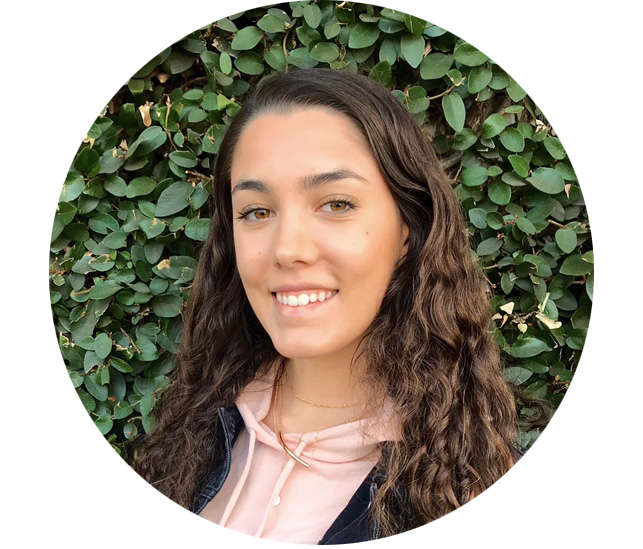
Yvonne Lucas
Yvonne graduated from Saint Anselm College in Manchester, NH in 2022 with a B.A in Behavioral Neuroscience. During her time there, she conducted research with rodent models and human participants. Yvonne is now a research technician in our laboratory with an interest in various neuroprotective mechanisms involved in preventing and/or ameliorating cognitive decline.
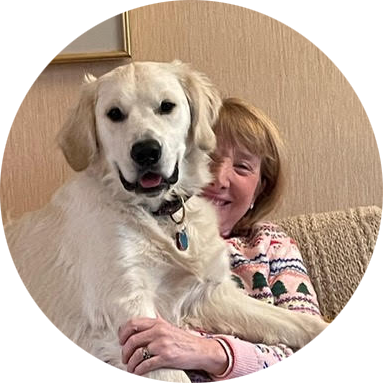
Penny L. Shultz
Penny received her BS in Psychology and Biology from Shippensburg University and her MS in Behavioral Neuroscience from Rutgers University. Her areas of expertise are in psychopharmacology and animal cognition. She has spent over 28 years characterizing the effects various drugs and nutritional manipulations have on the brain and behavior and has studied these effects throughout the lifespan of a variety of species (pigeons, rats, mice and most recently, rhesus monkeys). Penny has been with the Moore/Rosene Lab for over 15 years. During this time her primary responsibility has been to manage the behavioral testing of the NHPs. When she’s not knee deep doing that, she also enjoys managing the huge lab database, analyzing data, processing brains and helping out in any other aspect of the lab where she is needed.
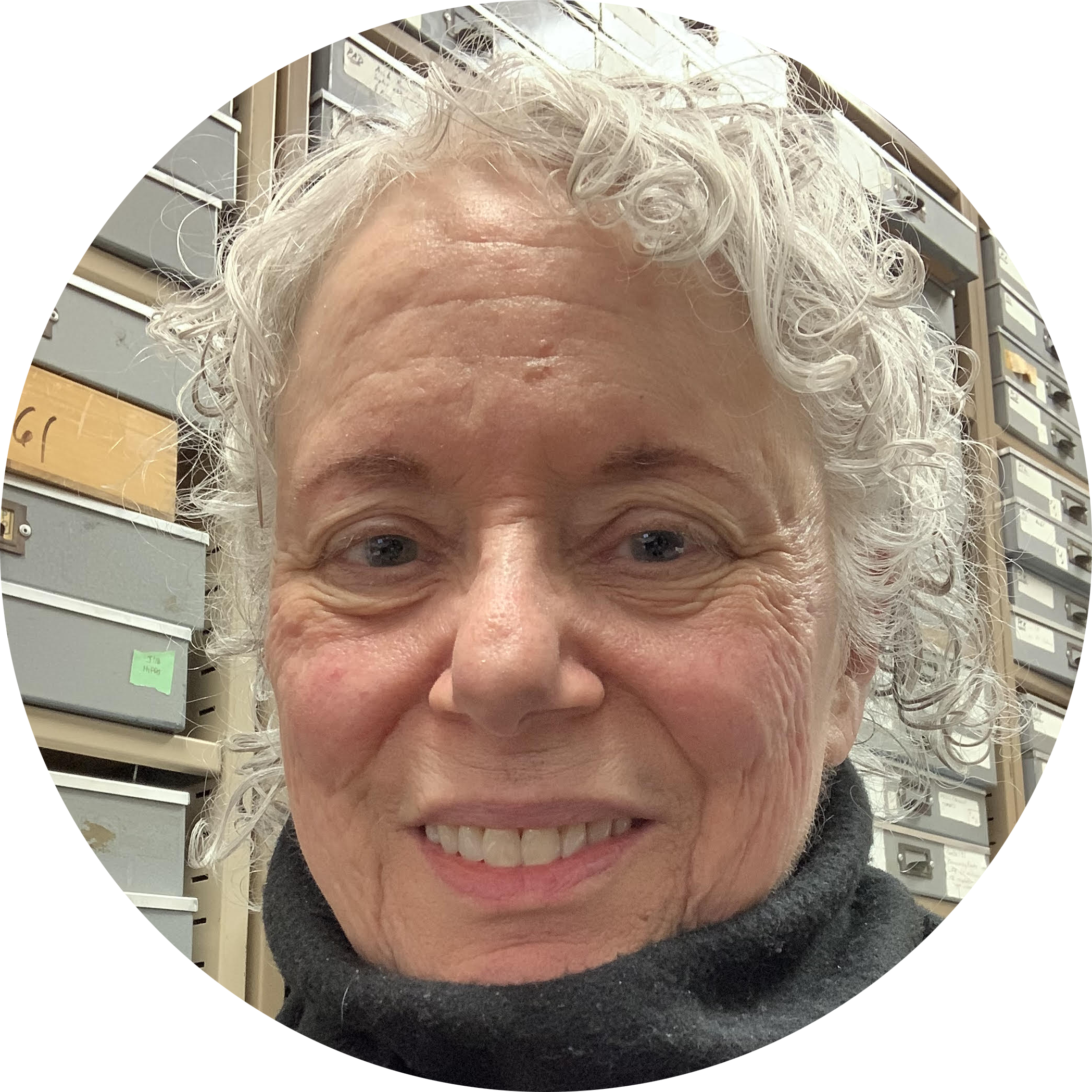
Karen Slater
Karen Slater is our Laboratory Manager and she is a Clark University graduate with a BA in Biology. She came to our laboratory with a rich and varied background including clinical (ophthalmic technician, dispensing optician), private research, tissue culture, karyotyping, transfection and ISH (BU Center for Human Genetics), DNA isolation, PCR and genome-wide searches in Parkinson’s disease, COPD and heart disease (BU Framingham Heart Study). Her current role includes overseeing compliance with monthly/yearly requirements (TB testing, animal census, radioisotope compliance, chemical inventory), placing orders for equipment and consumables and maintaining our 15 ultra-low freezers. Also, she assists new laboratory members in completing clearances to enter and work in our laboratory space, coordinates with Environmental Health and Safety, Animal Science Center and BU Facilities on laboratory issues.
Graduates
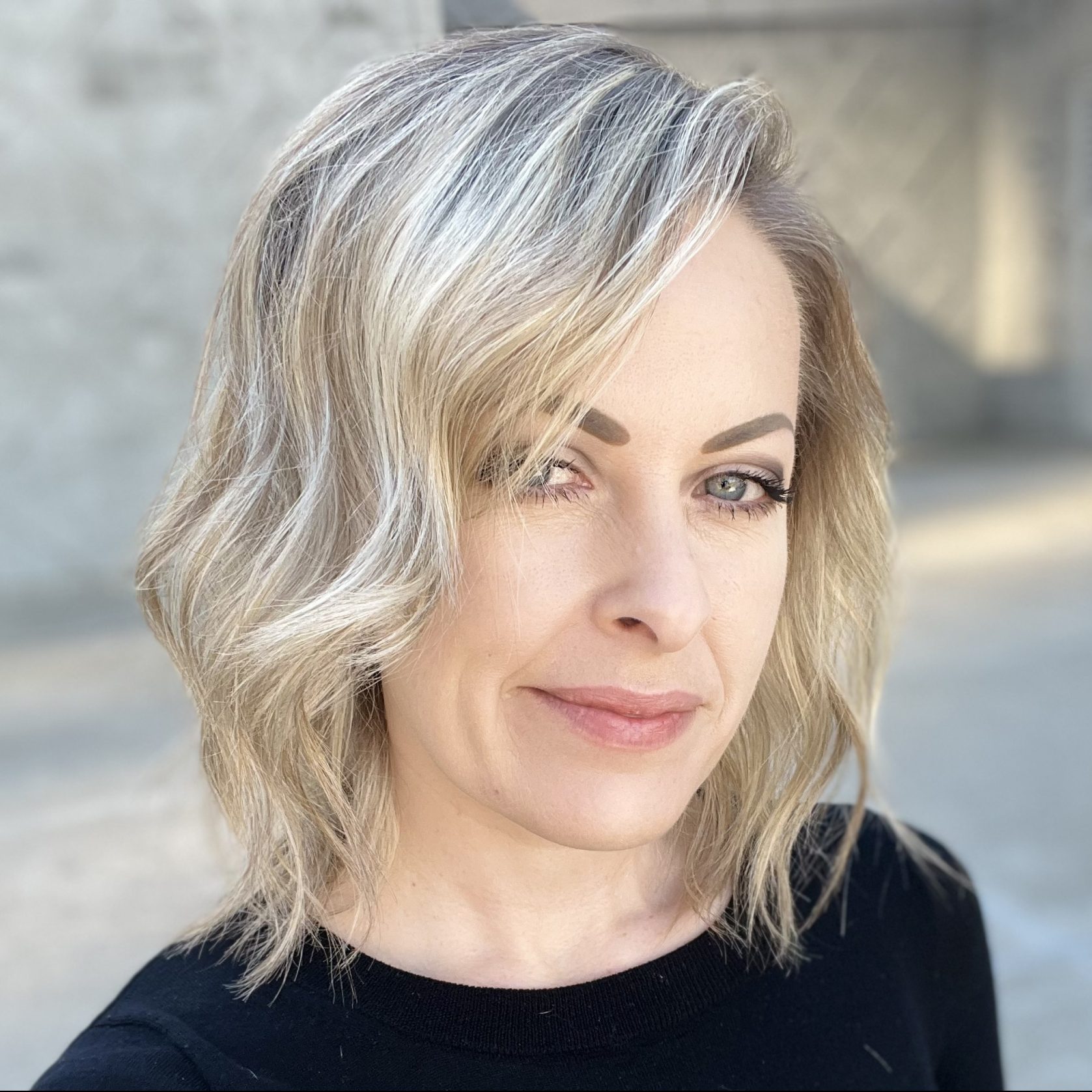
Karen Bottenfield
Karen graduated with her PhD from the department in July 2022. She received her A.A. from Spokane Falls Community College, B.A. in Anthropology from Eastern Washington University, and her M.S. in Forensic Anthropology from Chobanian & Avedisian School of Medicine. Karen has been using our rhesus monkey model of cortical injury to evaluate Glial Growth Factor 2 (an isoform of neurgulin-1) as a treatment for recovery of fine motor function. This project also involved immunohistochemical analyses of the brain tissue for markers of inflammation and plasticity. Karen also optimized a novel method to quantify newly synthesized myelin in the rhesus monkey brain that will be used to investigate myelin maintenance and plasticity in our normal aging and cortical injury models. Karen is currently the Senior Academic Program Manager, Oral Health Sciences Master’s Program at Boston University Chobanian & Avedisian School of Medicine.
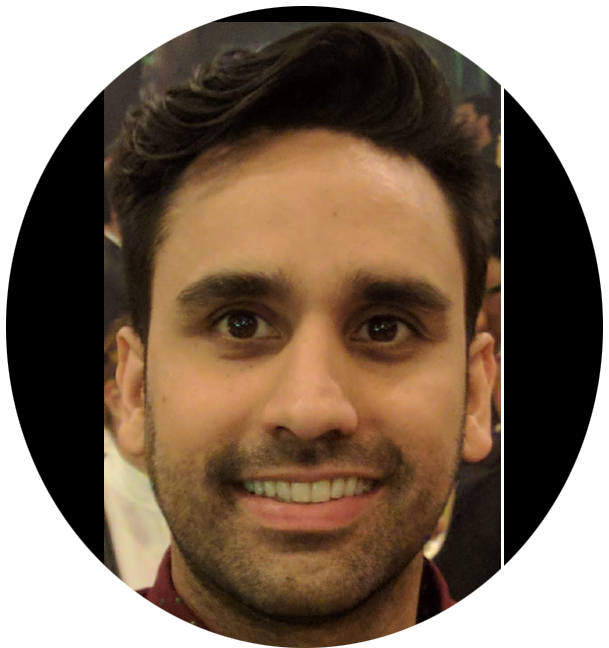
Ajay Uprety
Ajay worked on a project in which we examined the potential benefits of Curcumin supplementation in the aging monkey. Over a 3 year period, monkeys were given a daily oral supplement of either curcumin or vehicle control while completing testing on a battery of assessments. Ajay’s research interests include understanding the effects of Curcumin on Object Discrimination and Reversal learning, microglia morphology and function, neurogenesis and systemic inflammation. Ajay defended his pre-doctoral work in the summer of 2021 and is currently a post-doctoral candidate at the George Washington University.

Veronica Go
Veronica was a student in the Department of Pharmacology & Experimental Therapeutics. Her pre-doctoral dissertation studies focused on elucidating molecular and cellular mechanisms involved in enhanced functional recovery in monkeys treated with mesenchymal stem cell-derived extracellular vesicles following cortical injury. Veronica is now a Senior Scientist at NeuroTrauma Sciences, LLC.
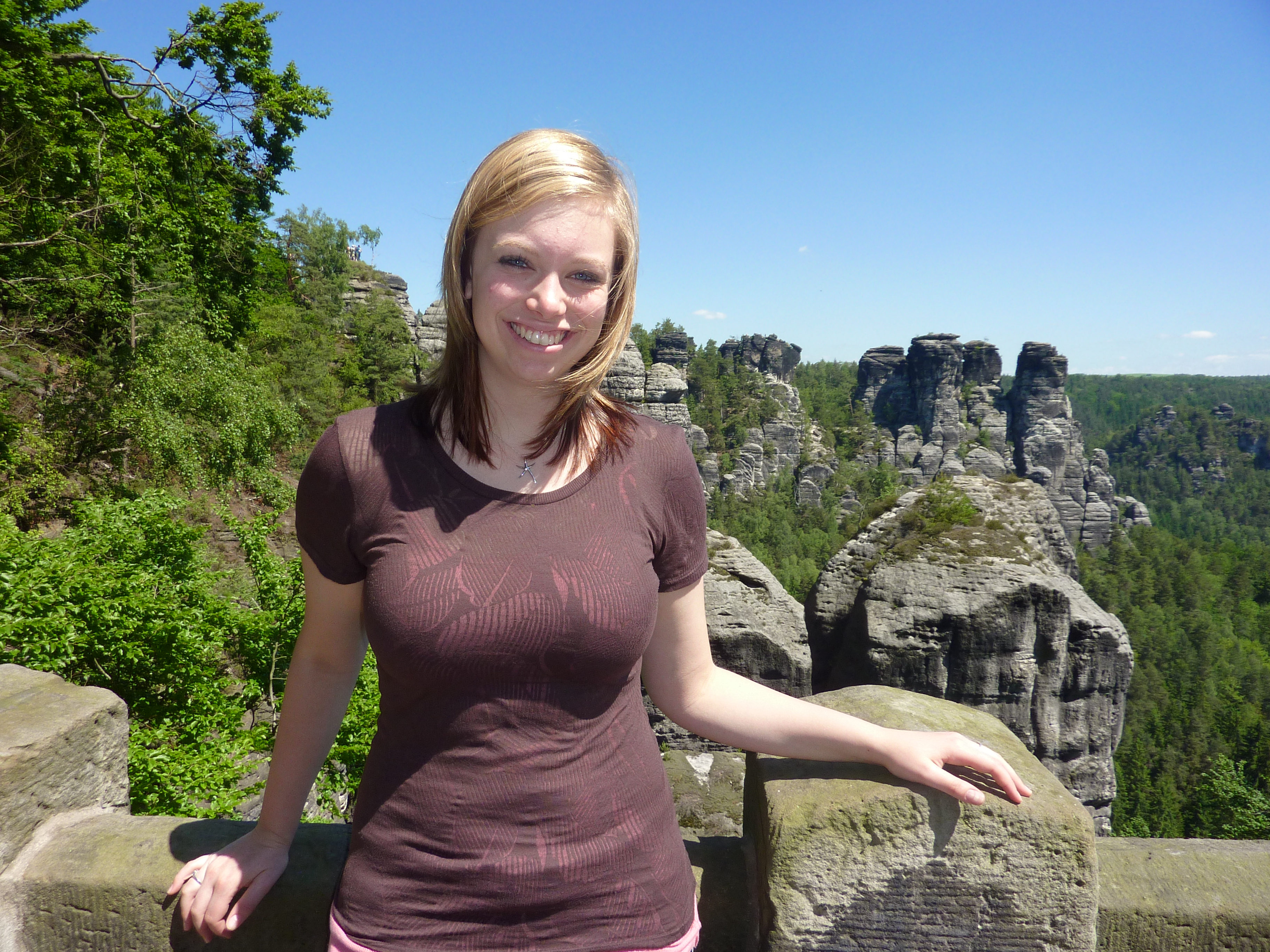
Mary Orczykowski
Mary investigated the role of umbilical derived stem cells as a therapy to facilitate recovery of fine motor function following cortical injury to the hand representation in primary motor cortex in young rhesus monkeys. Mary is Lecturer in the Division of Anatomical Sciences, Department of Surgery at the University of Michigan Medical School.
Recent Publications
Moore, TL, Medalla, M, Ibañez, S, Wimmer, K, Mojica, CA, Killiany, RJ, Moss, MB, Luebke, JI and Rosene, DL. 2023 Neuronal properties of pyramidal cells in lateral prefrontal cortex of the aging rhesus monkey brain are associated with performance deficits on spatial working memory but not executive function. Geroscience, DOI: 10.1101/2023.02.07.527321. PubMed PMID: 36798388; PubMed Central PMCID: PMC9934587.
Campbell, NB, Patel, Y, Moore, TL, Medalla, M and Zeldich. E. (2023) Extracellular Vesicle treatment alleviates neurodevelopmental and neurodegenerative pathology in cortical spheroid model of Down Syndrome. International Journal of Molecular Sciences. Feb 9;24(4):3477. doi: 10.3390/ijms24043477. PubMed PMID: 36834891; PubMed Central PMCID: PMC9960302.
Welke, LA, Rosene, DL, Killiany, RJ, Moss, MB and Moore, TL. (2023) Prefrontal and medial temporal interactions in memory functions in the rhesus monkey. Behavioral Neuroscience, DOI: 10.1037/bne0000556. PubMed PMID: 37023305; PubMed Central PMCID: PMC10192048.
Calderazzo, SM, Covert, M, De Alba, D, Bowley, BGE, Pessina, M, Rosene, DL, Medalla, M, Buller, B and Moore, TL. (2022) Neural recovery after cortical injury: effects of MSC derived extracellular vesicles on motor circuit remodeling. IBRO Neuroscience Reports. PubMed PMID: 36590089; PubMed Central PMCID: PMC9795302
Baxi, M, Karayumak, SC, Papadimitriou, G, Makris, N, Van Der Kouwe, A, Jenkins, B, Moore, T, Rosene, DL, Kubicki and Rathi, Y. (2022). Investigating the contribution of cytoarchitecture to diffusion MRI measures in gray matter using histology. Frontiers in Neuroimaging, Sec. Brain Imaging Methods. PubMed PMID: 37555179; PubMed Central PMCID: PMC10406256
Dimovasili, C, Fair, A, Garza, I, Batterman, K, Mortazavi, F, Moore, TL, and Rosene, DL. (2022). Aging Compromises Oligodendrocyte Precursor Cell Maturation and Efficient Remyelination in The Monkey Brain. Geroscience. PubMed PMID: 35930094; PubMed Central PMCID: PMC9886778.
Chang, W, Weaver, CM, Medalla, M, Moore, TL, and Luebke, JI. (2022). Age-related alterations to working memory and to pyramidal neurons in the prefrontal cortex of rhesus monkeys begin in early middle-age and are partially ameliorated by dietary curcumin. Neurobiology of Aging, 109, 113-124. PubMed PMID: 34715442; PubMed Central PMCID: PMC8671373.
Uprety, A, Moss, MB, Rosene, DL, Killiany, RJ and Moore, TL (2022) Curcumin Supplementation Improves Reversal Learning in Middle Aged Rhesus Monkeys. Behavioral Neuroscience, 136(2), 126-138. PMID: 34780208
Zhang, J, Buller, BA, Zhang, ZG, Zhang, Y, Lu, M, Rosene, DL, Medalla, M, Moore, TL, and Chopp, M. (2022) Exosomes derived from bone marrow mesenchymal stromal cells promote remyelination and reduce neuroinflammation in the demyelinating central nervous system, Experimental Neurology, 347. PubMed PMID: 34653510
Moore, TL, Young, DA, Killiany, RJ, Volfson, D and Kozak, R. (2021) The Effects of a Novel Non-Catechol Dopamine Partial Agonist on Working Memory in the Aged Rhesus Monkey. Frontiers in Aging Neuroscience, 13:757850. doi: 10.3389/fnagi.2021.757850. PMID: 34899271 PMCID: PMC8662559
Bottenfield, KR, Bowley, BGE, Pessina , MA, Medalla, M, Rosene , DL and Moore, TL. (2021) Sex Differences in Recovery of Motor Function in a Rhesus Monkey Model of Cortical Injury. Biology of Sex Differences. PubMed PMID: 34627376; PubMed Central PMCID: PMC8502310
Medalla, M, Chang, W, Ibañez, S, Guillamon-Vivancos, T, Nitttmann, M, Kapitonava, A, Busch, SE, Moore, TL, Rosene, DL and Luebke, JI. (2022) Layer-specific pyramidal neuron properties underlie diverse anterior cingulate cortical motor and limbic networks. Cerebral Cortex, 32(10):2170-2196. PubMed PMID: 34613380; PubMed Central PMCID: PMC9113240